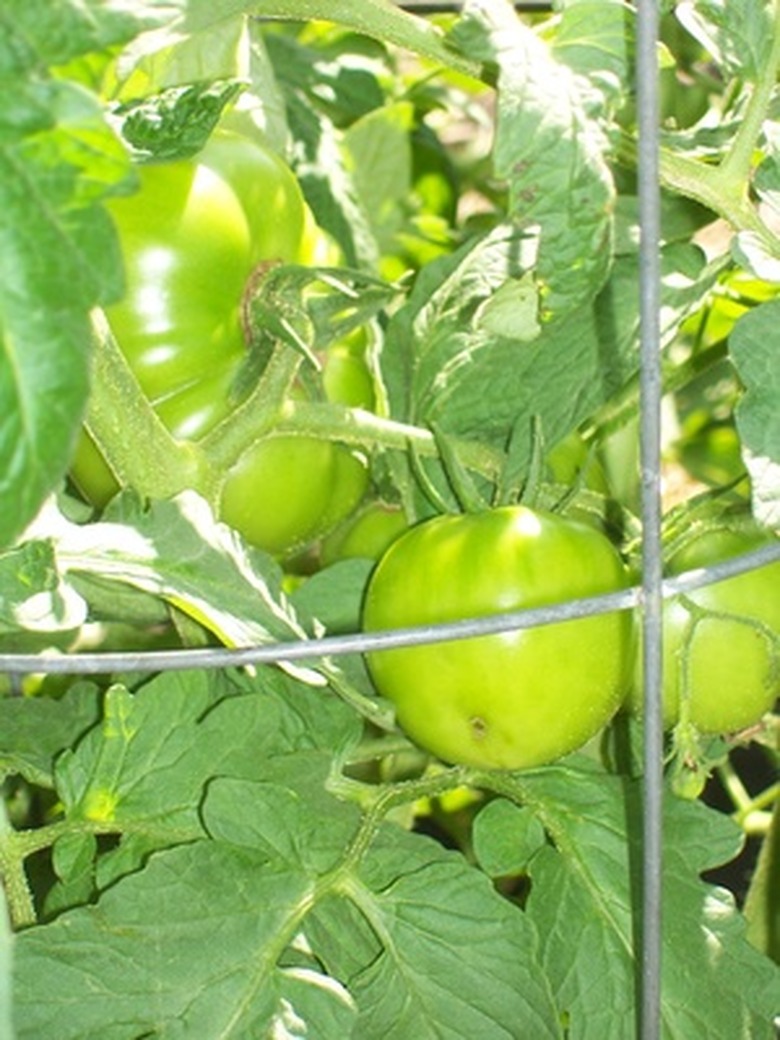When Should I Top Off My Tomato Plants & The Benefit Of Doing It?
Tomatoes are plants of the nightshade (Solanaceae) family. As any home gardener knows, tomatoes are grown in gardens throughout the United States for their edible fruit. They are relatively easy growers that require little space to flourish. Proper pruning techniques help maintain health and structural integrity. Among these pruning techniques is a method known as topping. Not all tomato varieties respond well to pruning; topping is detrimental under certain circumstances.
Step 1
Topping is the process of removing all the growing tips from a plant. This entails cutting all stalks of a plant still growing back to the level at which previous growth stopped. Topping prevents continued growth in these stems. According to Fine Gardening magazine author Frank Ferrandino, tomato topping is the last necessary pruning of each growth cycle. Ideal topping time is 30 days before the first frost in fall. Because the timing of the first frost it difficult to predict to the day, approximate times are sufficient.
Benefits of Topping
Step 1
Tomato topping benefits plants by redirecting sugars and nutrients. Toward the end of the annual growth cycle, tomato plants still bear fruit that is not fully mature. This fruit is forced to compete with growing stalks for the sugar plants create through photosynthesis and nutrients absorbed through the soil. Topping plants eliminates competition between fruit and stalks by redirecting all nutrients and sugars to the fruit. According to Ferrandino, topping may mean the difference between a bag of rotten green tomatoes at the end of the growing season and a late harvest of healthy, mature fruit.
Step 2
- Topping is the process of removing all the growing tips from a plant.
- Topping plants eliminates competition between fruit and stalks by redirecting all nutrients and sugars to the fruit.
General Pruning
Step 1
Pruning techniques other than topping benefit tomatoes, particularly indeterminate varieties. Indeterminate tomatoes are those plants with no distinct shape, size or growth cycle. Determinate tomatoes are varieties that always produce the same number of stalks and mature fruit in a metered cycle each year. A group of University of Maryland horticulturalists recommends pruning indeterminate tomato plants so that only one to three stalks are present. This decreases competition between stalks and fortifies plant structure. Author Julia F. Morton recommends pruning all tomato stalks that have already fruited in order to encourage new growth and fruit production.
When Not to Top or Prune
Step 1
Not all tomato plants are suited to topping and pruning. Pruning easily damages small tomato plants such as dwarf varieties and those grown in containers. In general, only tomato plants large enough for staking and caging, such as heirloom and tree tomatoes, are strong enough to withstand pruning and topping. Plants suffering from blossom-end rot do not benefit from topping and pruning–it worsens the condition. This also holds true for plants cracking in arid environments.
Step 2
- Pruning techniques other than topping benefit tomatoes, particularly indeterminate varieties.
- Author Julia F. Morton recommends pruning all tomato stalks that have already fruited in order to encourage new growth and fruit production.
